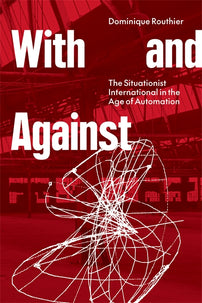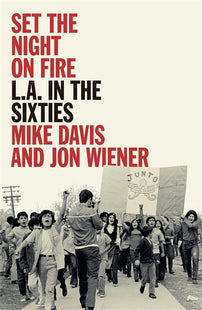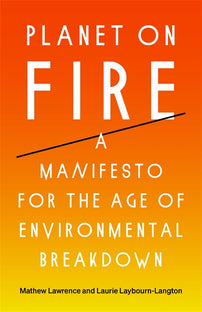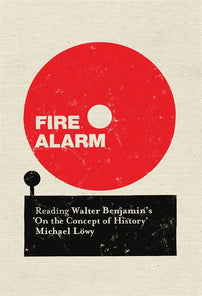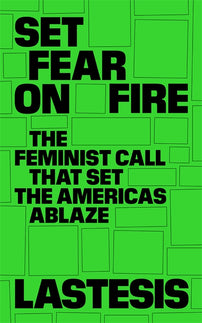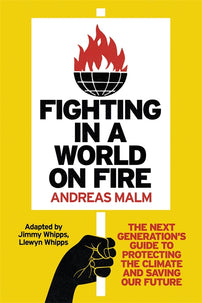Consumed by Fire
On April 16th, the Børsen, the former stock exchange in central Copenhagen, burst into flames. It was followed by an eruption of mourning from major news outlets and politicians. Dominique Routhier asks "what about great fires so enflames the bourgeois mind?"

The recent fire at the Old Stock Exchange, Børsen, in Copenhagen, was a spectacle to behold. As the flames greedily gobbled up the old 17th-century bourse, the news of the fire—in which no human was hurt—ripped through transatlantic fiber optic cables: London, New York, Paris, and beyond. Major newspapers such as the Guardian, New York Times, and Le Monde reported the story, promulgated Danish politicians’ teary-eyed reactions, and reproduced the dominant narrative about a “national tragedy.” Someone on Danish national television even referred to Børsen, unironically, as “the holiest building in Copenhagen.” This was nothing short of “the Danish Notre Dame moment.”
The event confirms in practice what Walter Benjamin described in theory: that capitalism is “an essentially religious phenomenon.” But what, more precisely, is at stake in events like these? Is it bourgeois society’s deep-seated fear of a communist plot, a secret lineage to the Reichstag fire in 1933, the RAF’s 1968 firebombings of two department stores in protest of the Vietnam War, or the setting ablaze of a police station in Minneapolis during the George Floyd protests? What about great fires so enflames the bourgeois mind?
Many of us who live in Copenhagen, myself included, were glued to our screens or flocking to Slotsholmen to watch Børsen burn in real-time. The defining moment was when Børsen’s landmark spire—three fierce dragons with entwined tails said to protect the crowns of the once-united kingdoms Denmark, Norway, and Sweden—dramatically collapsed, consumed by fire.
Politicians, journalists, commentators, and random passersby expressed shock, horror, and sadness at the sight of the burning building. The dominant mood was national melancholy, disbelief, and even grief. For those most invested in Børsen, such as Brian Mikkelsen, head of the Danish Chamber of Commerce that resides in and owns the building, the fire was not just a national tragedy but also a personal one: “The saddest day of my life.”
A zeal for national resurrection followed suit. The late fascist columnist Eva Selsing immediately called for "a popular movement for an exact reconstruction of Børsen," while Tom Jensen, editor-in-chief of Berlingske, the most prominent right-wing Danish newspaper, blurted out on X: “No matter what: Børsen must and shall be rebuilt.” A liberal member of Parliament, Jan E. Jørgensen, exclaimed: "All forces must be united to have this old, beautiful house rebuilt in all its power and splendor.”
While the building was still in flames, Copenhagen City Hall issued a statement that all mayors, regardless of political divides, would work together for the reconstruction of this landmark building: "It is crucial that we as a society—the private and public sectors, companies, and institutions—now work together to rebuild the iconic building. We will, therefore, reach out to the Danish Chamber of Commerce to establish a dialogue about how we can contribute. We cannot do without Børsen. Now is the time to show what we are made of. For the city's and Denmark's entire history."
Even the King, Frederik X, weighed in to express his royal sadness and issued a heartfelt thanks to the willing subjects who, according to reports from the news agency Ritzau, had risked their lives by running into the burning building to preserve Danish cultural heritage: "The Queen and I would like to thank all those who since early this morning have ensured that no one has been harmed and who have fought to save as much of the building as well as the many cultural treasures and artworks that Børsen contains."
Pelle Dragsted, the leader of the Red-Green alliance ‘Enhedlisten,’ the parliamentary majority party to the left of social democracy, echoed the royal sentiment of grief in expressing how sad and “terrible” it was “to see important cultural history disappear.” Dragsted accompanied his post with two images: a photo showing the burning building and another one showing a cop and five middle-aged white men carrying a massive painting into safety: “Thanks to the fire department, the police, and all the citizens and employees who helped salvage the many artworks in the building.” Across the Danish political spectrum, from the King to the far right to the left, there seems to be a strong emotional attachment—mediated by images—to the nation-state, its history, and its décor. What do these images tell us about our current moment?

One of the most discussed artworks from the fire at Børsen is the painting From Copenhagen Stock Exchange (1895) by the Danish painter P.S. Krøyer. Until that morning on April 16, 2024, Krøyer's painting hung unperturbed inside the Old Stock Exchange. Set in the imposing main hall of that very same building, with crystal chandeliers hanging from the gilded ceiling, the painting portrays approximately 50 men in formal wear and top hats. Each had paid a tidy sum to be immortalized in this—in terms of size at least—massive work of art (2.5 by 4 meters). The businessman and financier C.F. Tietgen, one of the wealthiest persons in Denmark in the 19th century, was placed right smack in the golden ratio—the sun falling in through the windows, gently caressing his white face.
By all standards, this painting is utterly banal: an embarrassment to art history and to the artist himself. Entertaining the idea that this is a “great” work of art would at least require some imagination: is it straightforwardly a mediocre and self-congratulatory commissioned painting, or perhaps a mise en abyme of power and capital, prefiguring high-modernist themes like self-referentiality, recurrence, and accumulation?
Whatever the painting is or might be—intrinsically, politically, or aesthetically—does not even enter the conversation. Clearly, the fuss about the fire at Børsen is not about the building as such or the supposed “invaluable” artwork within it. What is at stake—as this painting illustrates—is the right to define what counts as “valuable” and who the protagonists of history are. Prime Minister Mette Frederiksen correctly noted that this was not simply a building but “a piece of Danish history on fire.”
The "cultural heritage" question is not about the inherent value, significance, or aesthetics of places, buildings, and artworks. As the Parisian communards' toppling of the Vendôme Column in 1871 powerfully illustrated, “beauty” and “worth” result from historical power struggles between conflicting class interests, norms, and ideals.
What is really at stake in the fire at Børsen and in similarly spectacular events is not about the concrete damage to material things but their profanation in the abstract: what is genuinely sacred and must be restored at all costs is the representation of capitalist society.
This particular event caught global media attention not because anyone truly cares about Børsen outside of Denmark. For most people outside of this country, this was likely the first time they ever heard about it. Only in the context of its partial destruction does it become newsworthy, a stand-in for how Western society wants to represent itself. From relative obscurity to the doux commerce-center-of-the-universe-for-a-day, Børsen is thus simultaneously capitalist society itself, a part of that society, and the means of its unification. At the level of what Guy Debord called “the spectacle,” there is no real tension between the national and the international. Denmark's history is transparently “world history.”

A limousine outside the still smoldering Børsen. Credit: David Henke
While the state of Denmark is officially mourning the partial destruction of Børsen—a historical epicenter for Scandinavian and Northern European colonialism, accumulation, and finance—it is conveniently shifting attention away from its complicity in the genocidal campaign in Gaza: a genocide that has cost more than 35,000 lives (at the time of writing) and also eradicated significant parts of the region’s historical landmarks and cultural heritage.
The systematic targeting and destruction of cultural heritage in Gaza, what has been called a ‘cultural genocide,’ includes an unfathomable number of ancient buildings, architectural sites, knowledge infrastructures, and archives. Since October 7, 2023, the Israeli occupation army has razed to the ground museums, libraries, and every single one of Gaza’s universities, alongside only god knows how many holy sites, cemeteries, churches, and mosques—most notably perhaps the Great Omari Mosque, which dates back more than fourteen hundred years: half a millennium before the first primitive settlements in Copenhagen, Denmark.
It is not only by comparison to the Great Omari Mosque or other world heritage sites that Børsen falls short. Though Børsen’s spiraling dragon-tail spire was unique, the building was hardly any architectural world wonder but a form of state-sponsored “kitsch” avant-la-lettre: a pale imitation of the Dutch Renaissance style. Considered in the context of the cultural heritage recklessly destroyed in Gaza since October 7—as of April 8, UNESCO has verified damage to at least 43 cultural heritage sites—the Old Stock Exchange in Copenhagen appears for what it is: a kind of nationally fetishized monument. A building that, for more than 400 years, stood literally and figuratively at the center of the capitalist world system in which Denmark played a pivotal historical role through its largely unacknowledged colonial adventures of exploitation, plundering, and enslavement across four continents.
In that perspective, it's almost as if the Queen Mary sculpture—placed by artists La Vaughn Belle and Jeannette Ehlers in front of the West Indian Warehouse in Copenhagen in honor of Mary Thomas from St Croix, leader of the “Fireburn”-rebellion that set fire to over 50 plantations in Frederiksted in the Danish Antilles—had risen one night to symbolically avenge centuries of oppression with her torch.
From that perspective, there is something beautifully unsettling about this fire. Ultimately, the fire at Børsen in Copenhagen illuminates that everything the bourgeois mind thought was fixed and solid—the structures of power and its peculiar décor—reveals itself to be impermanent and transient, nothing but hot black smoke blowing into the sky.
[book-strip index="1"]

